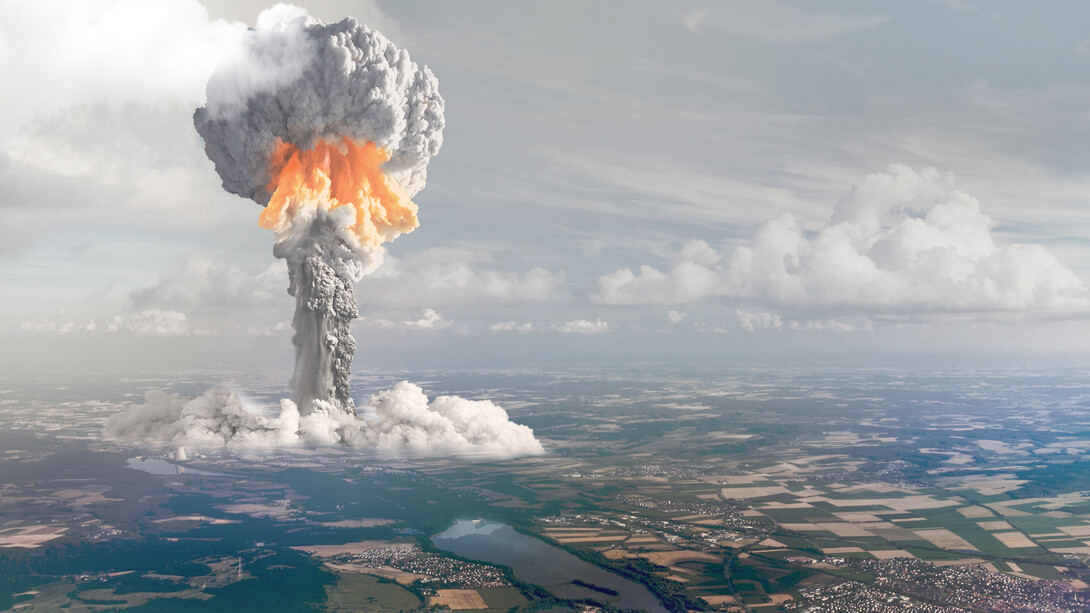For decades, the idea of nuclear disarmament, though complex and challenging, held a glimmer of hope. The global community largely agreed that fewer nuclear weapons meant a safer world. But a recent, sobering report from the Stockholm International Peace Research Institute (SIPRI) delivers a stark warning: that era of reduction is drawing to a close, and we might be on the cusp of a dangerous new nuclear arms race.
This isn’t just an academic observation; it’s a critical shift with tangible implications for international security and the stability of our world. SIPRI’s annual assessment, a respected benchmark for global armaments, paints a picture of intensified modernization programs and a concerning erosion of arms control agreements.
The Shifting Landscape: What the SIPRI Report Reveals
SIPRI’s 2025 Yearbook highlights several key trends contributing to this troubling outlook. Foremost among them is the widespread modernization of nuclear arsenals. Nearly all nine nuclear-armed states – the United States, Russia, the United Kingdom, France, China, India, Pakistan, North Korea, and Israel1 – are actively upgrading their existing weapons and developing new, more advanced versions. This isn’t just about maintaining old systems; it’s about enhancing capabilities and potentially increasing the overall number of warheads.
A significant factor in this shift is the slowing pace of warhead dismantlement by Russia and the United States, which historically drove the overall decrease in global nuclear weapon inventories since the Cold War. Now, the rate of new deployments is accelerating, outpacing the reductions.
China’s rapid expansion of its nuclear arsenal is particularly noteworthy. SIPRI estimates China’s nuclear warhead count is growing faster than any other country’s, with projections of significant increases in the coming years. While still smaller than the arsenals of Russia and the US, this rapid growth signals a significant strategic shift.
Why the Retreat from Disarmament?
Several intertwined factors are contributing to this worrying trend:
- Weakening Arms Control Regimes: Treaties that once provided frameworks for limiting nuclear weapons are either expiring or being abandoned without new agreements to replace them. The New START Treaty, the last remaining bilateral arms control agreement between the US and Russia, is set to expire in February 2026, with no clear path for a successor. This leaves a critical void in efforts to cap and reduce the largest nuclear stockpiles.
- Geopolitical Tensions: Heightened global tensions, driven by conflicts in various regions and an increasingly complex international security environment, are fueling a renewed emphasis on nuclear deterrence. Nations perceive a greater need for these weapons to safeguard their security interests.
- Modernization and New Technologies: The development of advanced weapon systems, including precision-strike capabilities and missile defense systems, is altering strategic calculations. Some argue these advancements can create instability by blurring the lines between conventional and nuclear warfare, and by raising questions about the effectiveness of traditional deterrence.
- Shifting Doctrines: There’s a growing discussion, particularly in certain nuclear-armed states, about adopting nuclear doctrines that move beyond simple deterrence, potentially envisioning scenarios where nuclear weapons could be used in a wider range of circumstances. This shift in thinking naturally leads to an emphasis on maintaining and expanding arsenals.
The Stakes: Consequences of a Nuclear Resurgence
The implications of this retreat from nuclear disarmament are profound and far-reaching:
- Increased Risk of Conflict: A growing number of nuclear weapons, coupled with heightened tensions and a weakened arms control architecture, inherently increases the risk of miscalculation, escalation, and ultimately, nuclear conflict. Even a limited nuclear exchange could have catastrophic global consequences.
- Arms Race Acceleration: The modernization efforts and lack of new agreements create a fertile ground for a full-blown arms race, where nations endlessly strive to outdo each other, diverting immense resources that could otherwise address pressing global challenges.
- Proliferation Concerns: As existing nuclear powers expand their arsenals and nuclear rhetoric intensifies, the temptation for other states to pursue their own nuclear weapons programs could grow, further destabilizing regional and global security.
- Erosion of Trust: The breakdown of arms control agreements and the shift towards a more confrontational nuclear posture erode international trust and cooperation, making it harder to address other critical global issues.
Looking Ahead: Navigating a Perilous Path
SIPRI’s warning is a call to action. While the path forward is undoubtedly challenging, it’s crucial to resist the notion that the era of nuclear disarmament is irreversibly over. Reversing this trend requires a renewed commitment from nuclear-armed states to dialogue, transparency, and the establishment of new, robust arms control frameworks. It means moving beyond outdated doctrines and embracing a shared understanding that nuclear weapons ultimately diminish, rather than enhance, global security. The stakes are too high for complacency.



